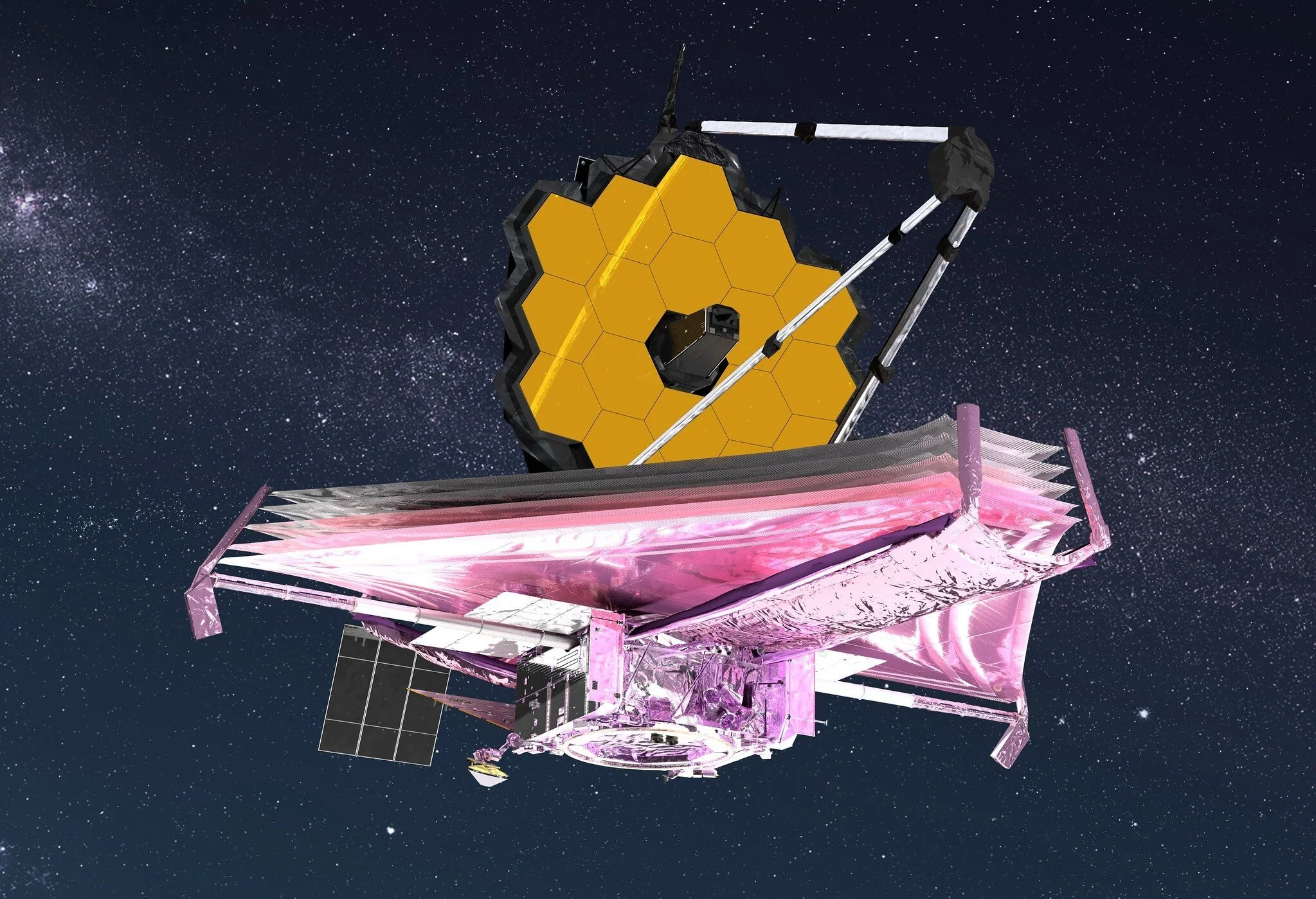
88: Galaxy Munchies
When a galaxy eats another galaxy it's called "Galactic Cannibalism". But what if a galaxy eats a galaxy that ate another galaxy, which maybe ate another ... we're getting into Russian nesting dolls here. Emily gives all the latest on new evidence of galactic cannibalism in our local neighbourhood, galaxy-wise, in the form of strangely ancient globular clusters.
87: Star Go Boom!
Some stars go out with a whimper, but others go with a bang — and what a bang! Supernovae are ludicrously energetic explosions, so you wouldn't want to see one up close. Astronomers to do spot them, in surprisingly large numbers — though usually they only get to observe them after they've lit up. Recently, however, researchers managed to get loads of data about one supernova in a not-too-distant galaxy *before* it went boom, thanks to a lucky intervention by this podcasts favourite space telescope …

86: Extragalactic X-Ray Exoplanet
We've spotted thousands of planets around other stars in our own Milky Way. But when we look at other galaxies, it's mostly impossible to see individual stars — let alone any planets orbiting them. Recently, astronomers spotted what looks suspiciously like a transit event in the signal from a bright x-ray binary system in the whirlpool galaxy. Could it be an exoplanet? Emily runs throuugh all the ways this might *not* be the case, and we're left with a tantalising "well ... maybe”.

85: Lucy In The Sky With Trojans
We're going back to Jupiter again — or, near Jupiter anyway. Like the Lucy space probe we're zooming off to the 4th and 5th Lagrange points of Jupiter's orbit, where a whole pile of Trojan asteroids are camped. Emily explains Lucy's mission, how it got the name (it's complicated), and what we hope to learn about the solar system's origins from this Trojan multitude.

84: Spot Speeds Up
There are few things in the Solar System more iconic then Jupiter's Great Red Spot, that swirling vortex staring out from the giant planet like a huge eye. Ever since Cassini (or was it Hooke?) first spotted it back in the late 17th century, it's been an object of fascination for astronomers and amateur stargazers alike. New research shows the spot is not only shrinking, it's speeding up — but why? What's going on? What even is this thing anyway? Emily's got all the answers.

83: James Webb Set For Launch (Honestly!)
We've been waiting. And waiting. And ... waiting. Finally — *finally!* — the James Webb Space Telescope is ready for launch on 18 December this year. Which is Chris's birthday, so things better go smoothly or he'll be pretty upset. Emily explains why this is a momentous event for astronomy, and what we hope to get from this amazing bit of astronomical engineering.

82: Billionaires In Space!
Branson's done it. Bezos is going to do it. Elon's doing it for sure, if only to find out where he parked his car. All the rich kids are heading to space — but where is that, exactly? How high to you have to go to actually get into the astronaut club? Emily and Chris go over the first Virgin Galactic fully-populated flight, and discuss where space may or may not begin — and what it means when really rich people decide they want to be astronauts.

81: To Infinity And Beyond!
Live and online at the York Festival of Ideas 2021, Emily and Chris discuss infinities. Is the Universe infinite? What does that even mean? Does it go on forever in all directions? Does it bend back on itself? Is it a multidemonsional doughnut or saddle? And will it last forever? How big is infinity, anyway?

80: Mapping the Unseeable
Hundreds of scientists have carried out the largest survey of dark matter in the universe, and released the first tranche of results. It's a staggering bit of research, involving observations 100 million galaxies with some of the finest astronomical imaging gear on the planet. And guess what? Einstein was wrong! Or, well, that's what some headlines screamed. The reality is a little more nuanced: there are some intriguing discrepancies between models and experiments, and lots more work to do.

79: Voyager Hears A Hum
Our farthest-flung object, little Voyager 1, is still hurtling through the cosmos, 21 light hours away in interstellar space. And decades into its mission it's still measuring stuff! Voyager 1 sent back measurements of the background hum of the interstellar medium, the incredibly diffuse plasma that fills the void between our solar system and the next.
